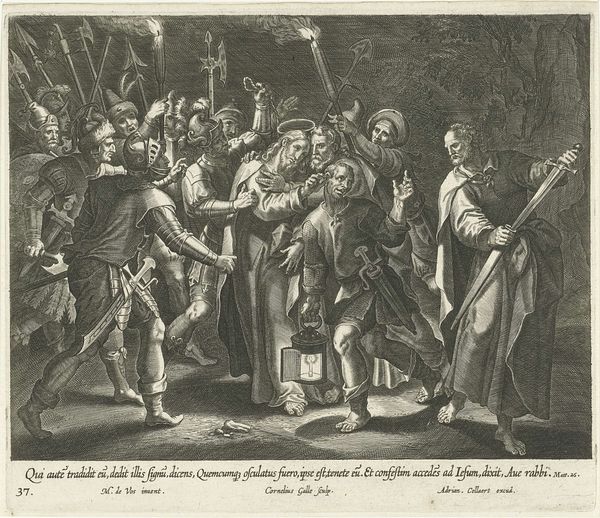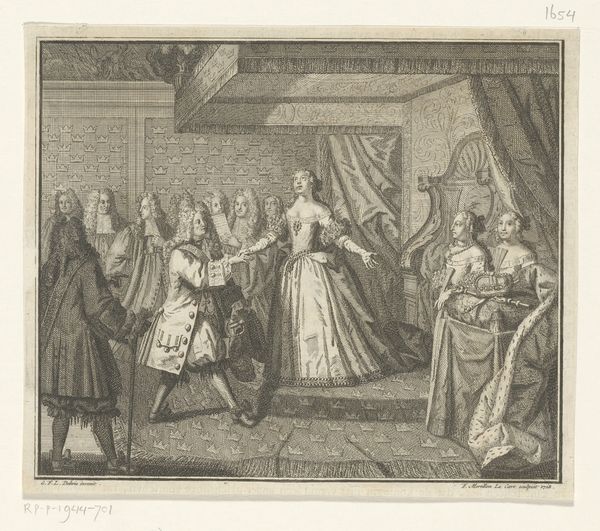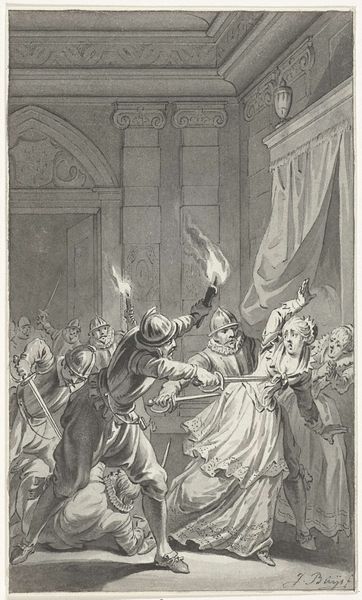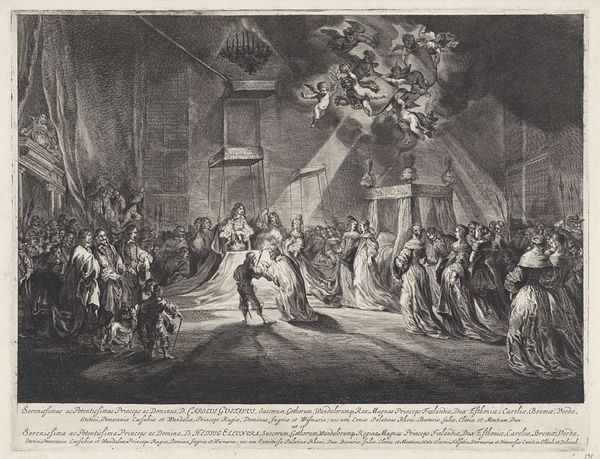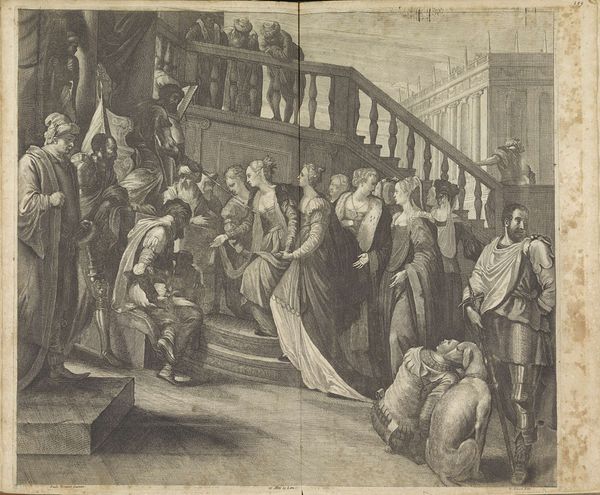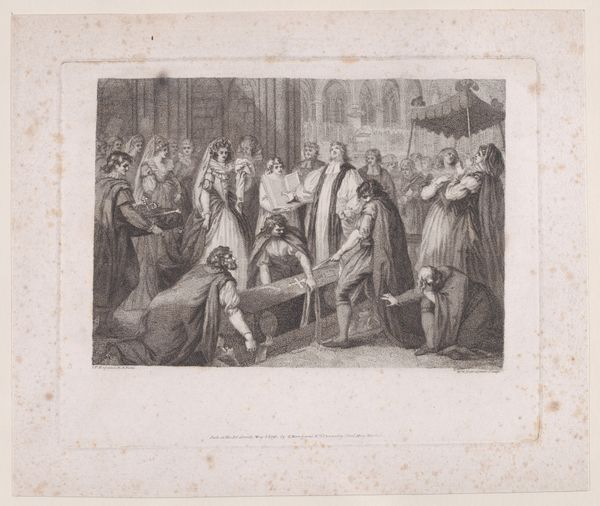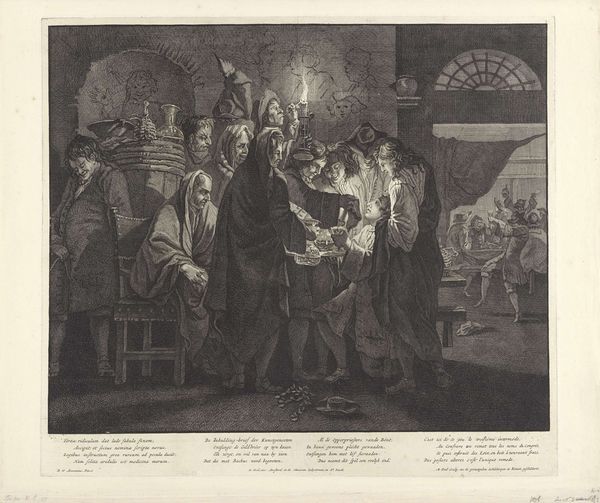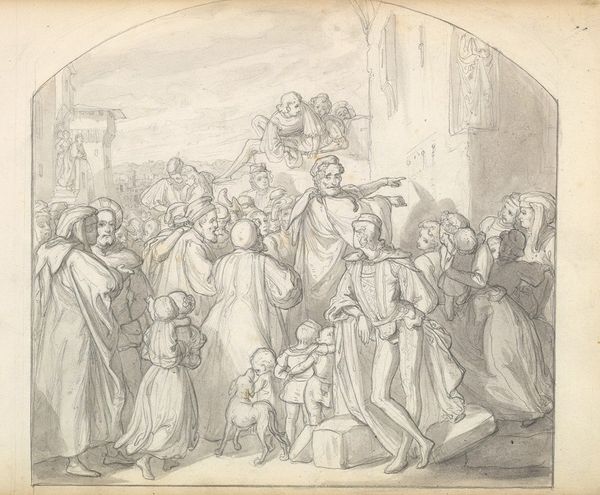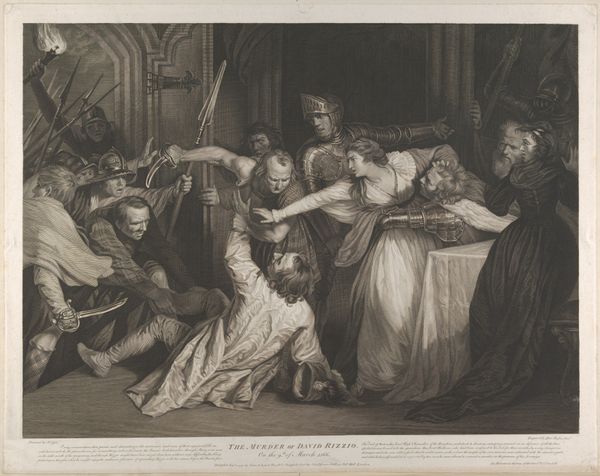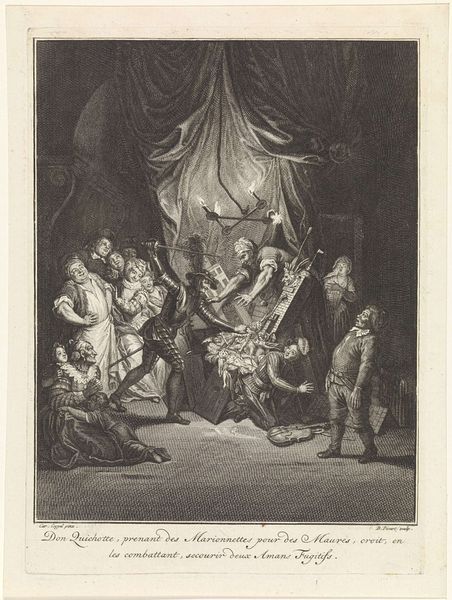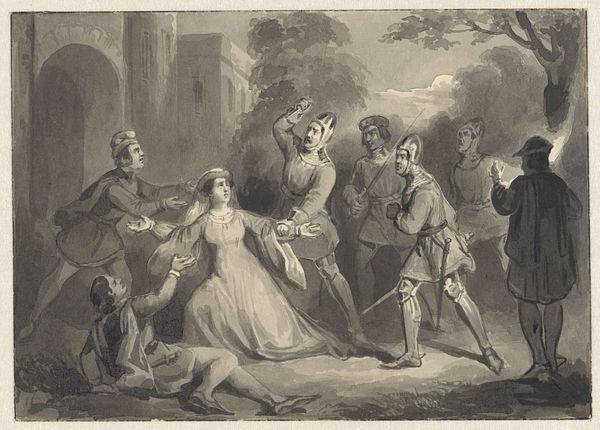
Maria de' Medici ontsnapt uit het kasteel van Blois, 1619 1685 - 1732
0:00
0:00
philipvangunst
Rijksmuseum
print, engraving
#
narrative-art
#
baroque
# print
#
figuration
#
history-painting
#
engraving
Dimensions: height 150 mm, width 186 mm
Copyright: Rijks Museum: Open Domain
Curator: Philip van Gunst created this engraving, entitled "Maria de' Medici ontsnapt uit het kasteel van Blois, 1619," sometime between 1685 and 1732. What's your first impression? Editor: Dark. Melodramatic. There's a tension in the stark contrasts, and it pulls me right into this clandestine moment. What do you think, beyond the surface drama? Curator: I see it as a depiction of powerful, empowered female agency. Maria de' Medici isn't merely escaping; she's actively reclaiming her political freedom from imprisonment. Her agency subverts the patriarchy of the time. Editor: That makes sense when you think of her later life, as well as earlier depictions of strong queens using symbols. I’m particularly drawn to the symbolic weight of the ladder here—literally, a means of ascension. The torch bearers, a visual reference to her hidden life? Curator: Absolutely! The light piercing the darkness hints at hidden power dynamics and the clandestine networks necessary for women, and indeed any marginalized groups, to navigate oppressive systems. We also see this with the male figure being cloaked, shrouded, to conceal him as being active in the conspiracy. Editor: Right! He is a shadowy, almost spectral, protector. Looking more closely, I wonder about the repeated architectural elements. There is the castle wall in the background, suggesting imprisonment, but those shapes repeat in the bonnets of her female companions, offering her protection. Is Van Gunst highlighting their shared oppression, or am I reaching? Curator: No, I think that is spot-on! It's about highlighting the intricate connections between female figures who historically offered support in each others' struggles against injustice, each mirroring and echoing each other. In that light, what seems at first glance as only an historical work transforms into an encouragement towards shared resilience. Editor: You're right. Initially, the scene appeared rather sensational to me. Now I appreciate the piece more. Curator: It's about interrogating how history represents and, perhaps more importantly, misrepresents women, isn't it? The iconographic language is a vehicle for her active resistance and empowerment in that sense. Editor: A story, a symbol, of a power play in defiance of constraint. Very affecting.
Comments
No comments
Be the first to comment and join the conversation on the ultimate creative platform.
